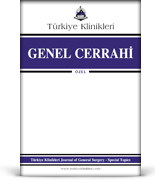Tümör biyolojisinin daha iyi anlaşılması ve yeni ilaçlar tedavide önemli değişimlere neden olmuştur. Bir asırdan fazla meme kanserinin tedavisi olan radikal mastektomi, meme kanserinin lokal-bölgesel hastalık olduğu hipotezine dayandırılmıştır. 1970'li yıllarda Fisher'in yaptığı çalışmalar, kanser hücrelerinin bölgesel lenfatiklere uğramadan da sistemik dolaşıma ulaşacağını göstermiştir. Sistemik hastalık olarak kabul edilen meme kanserinin multidisipliner tedavisine geçilmiş, erken evre meme kanserinde radikal mastektominin yerini meme koruyucu cerrahi (MKC)/mastektomi+aksiller diseksiyon (AD), kemoterapi, hormonoterapi ve radyoterapi almıştır. Lokal ileri meme kanserinde tedavi olarak modifiye radikal mastektomi, kemoterapi ve radyoterapi uygulanmıştır. Ancak, daha sonra yapılan klinik çalışmalar neoadjuvan kemoterapiye (NAK) iyi yanıt alınanlarda memenin korunabileceği göstermiştir. 1990'lı yıllarda erken evre meme kanserinde (cN0) sentinel lenf nodülü biyopsisi (SLNB) dual yöntem ile yapılarak, SLN negatif olanlarda AD'den kaçınılabileceği gösterilmiştir. SLNB, cN0 hastalarda standart bir girişim olmuştur. Bu sayede AD'ye bağlı başta lenfödem olmak üzere ciddi komplikasyonlardan kaçınılmıştır. Meme kanserinin heterojen bir hastalık olması tümörün dört farklı moleküler alt tipe ayrılmasına neden olmuştur. Bu sayede her hastaya aynı tedavi değil kişiye özel tedavi uygulanmaya başlanmış ve aşırı tedaviden kaçınılmıştır. Yaşam süresinin uzaması ve nükslerin azalması, MKC oranının artmasını, onkoplastik cerrahi ile daha güzel bir kozmetik görünüm sağlanmasını ve daha iyi bir yaşam kalitesini gerektirmiştir. Yeni ve hedefe yönelik ajanlar ile özellikle kötü prognozu gösteren HER-2+ ve triple negatif hastalarda NAK'a tam yanıt oranının artması, cN0 olmasına bakılmaksızın NAK uygulanmasını gündeme getirmiştir. NAK sonrası tümörün tamamen kaybolması\meme cerrahisine gerek olmayabileceğini düşündüren çalışmaların yapılmasına neden olmuştur. Ancak, bazı çalışmalar tümör yatağına yapılan vakum biyopsilerin yanlış negatiflik oranının yüksek olduğunu göstermektedir. Bugün daha ucuz ve güvenli olan lumpektomiye gerek olmadığını söylemek güçtür. Tanı sırasında cN1 olup, NAK sonrası cN0 olanlarda SLNB'nin yanlış negatiflik oranı yüksektir (yaklaşık %13). Bu oranın ≤%5 seviyesine düşürülmesi için dual yöntem uygulanması, kemoterapi öncesi pozitif lenf nodülünün işaretlenmesi ve SLN ile birlikte 3-4 nodülün çıkarılmasını öneren klinik çalışmalar vardır. Sonuç olarak, tümör biyolojisinin daha iyi anlaşılması ve yeni ilaçlar meme kanserinin tedavisini değiştirerek, cerrahi tedavinin rolünü azaltmıştır.
Anahtar Kelimeler: Meme kanseri yönetimi; cerrahi; kemoterapi; bekçi lenf nodülü biyopsisi; moleküler alt tipler
A better understanding of tumor biology and new drugs have led to significant changes in the management of breast cancer (BC). Radical mastectomy, which had been a treatment for BC for more than a century, was based on the hypothesis that BC is a local-regional disease. In the 1970s, Fisher's studies showed that cancer cells could reach the systemic circulation without undergoing regional lymphatic. Multidisciplinary treatment of BC, which was considered a systemic disease, had been started and radical mastectomy had been replaced by breast-conserving surgery (BCS)+ axillary dissection (AD), chemotherapy, hormonotherapy, and radiotherapy in early-stage BC. Modified radical mastectomy, chemotherapy, and radiotherapy were applied as a treatment for locally advanced BC. However, later clinical studies have shown that the breast can be preserved in those who respond well to neo-adjuvant chemotherapy (NAC). In the 1990s, sentinel lymph node biopsy (SLNB) in early-stage BC (cN0) was performed using blue dye and radioisotope. It has been shown that AD can be avoided in SLN-negative patients, and SLNB has been a standard intervention in cN0 patients. In this way, very serious complications of AD, especially lymphedema, were avoided. The fact that BC is a heterogeneous disease has caused the tumor to be divided into four different molecular subtypes. In this way, not the same treatment was applied to each patient (one size fits all), but to the individual, and over-treatment was avoided. The prolongation of life expectancy and the decrease in recurrences provided an increase in the rate of BCS, an acceptable cosmetic result with oncoplastic surgery, and a better quality of life. The increase in the rate of complete response to NAC with new and targeted agents and especially in HER-2+ and triple-negative patients with a poor prognosis has led to the use of NAK regardless of cN0. The complete disappearance of the tumor after NAC has been induced to studies suggesting that breast surgery may not be needed. However, some studies show that vacuum biopsies performed on the tumor bed have a high rate of false negativity. It is difficult to say that there is no need for lumpectomy, which is cheaper and safer today. The false negativity rate of SLNB is high in patients with cN1 at the time of diagnosis and cN0 after NAC (approximately 13%). In order to reduce this rate to ≤5%, there are clinical studies recommending the use of the dual method, marking the positive lymph node before chemotherapy and removing 3-4 nodules with SLN. As a result, a better understanding of tumor biology and new drugs have changed the management of BC and de-escalate the role of surgical treatment.
Keywords: Breast cancer management; surgery; chemotherapy; sentinel lymph node biopsy; molecular subtypes







.: Process List